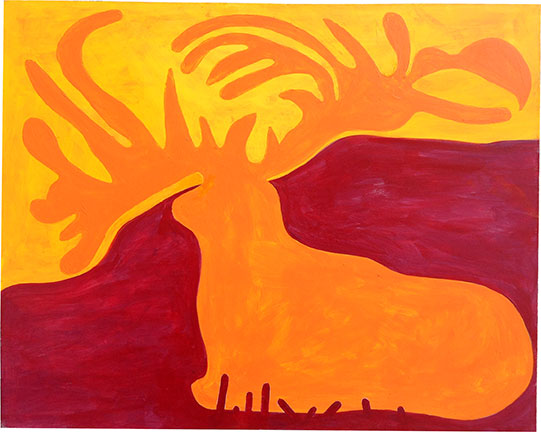
 |
Dazzle Camouflage was a strategy first deployed by the British on their warships during WWI. Credited to zoologist John Graham Kerr, the idea was not to conceal but to confuse perception by painting the ships in disruptive, jarring patterns so that the ship’s direction of movement, scale and distance of remove became less legible to the enemy.
Here Pleistocene era creatures are subject to dazzle camouflage in the context of the mediated environment.
Dazzle-Cam strikes me as a compelling area of investigation because it:
•Represents a life-and-death utilization of aesthetic concerns.•Suggests that aesthetics are at root a matter of abstracted biological camouflage
•Highlights the pivot point involved in rewilding and de-extinction – i.e.: is the animal emerging from extinction or receding further into the past, is the mediated environment the de facto landscape wild creatures must now breach for their survival?
These paintings are a companion series to the Missing The Megafauna installation at the Met. Each features a silhouetted megafauna that went extinct in the Late Pleistocene and with which humans for a time coevolved. My motivation in focusing on each successive creature is to sculpt a place in memory to house the animal.
I researched the morphology of each creature and synthesized disputed conjectures concerning particular body forms and behavior so as to arrive at what I felt might be an iconic and individualized representation of the species. This process of contemplation was a personal application of my notion that as the ecosystem degrades and our fellow creatures succumb to extinction, there is utility in taking imaginative custodianship of the departed in order to construct and maintain the memory of an intact ecosystem as a resiliency resource for assistance and refreshment through crisis and transition.
As the series unfolded I became increasingly entranced and emboldened by the prospect of exploring equivalencies between rewilding as a conservation practice and as a metaphor or strategy for Painting’s formal rejuvenation.
To investigate the possibility of resurrecting an archaic painting strategy as a form of aesthetic rewilding, I situated the series in reference to the end-game minimalism of the late 1960s, when Painting ostensibly was struggling with its own extinction event. The bifurcation of the canvas into color fields reflects a compositional strategy of Brice Marden and other hard-edge abstractionists of the era. The creatures stretch from side-to-side, articulating the boundaries of the picture plane in a manner analogous to Susan Rothenberg’s horse paintings of the 1970s, when she was engaged in her own effort to repopulate Painting by making it a sustaining environment for representation.
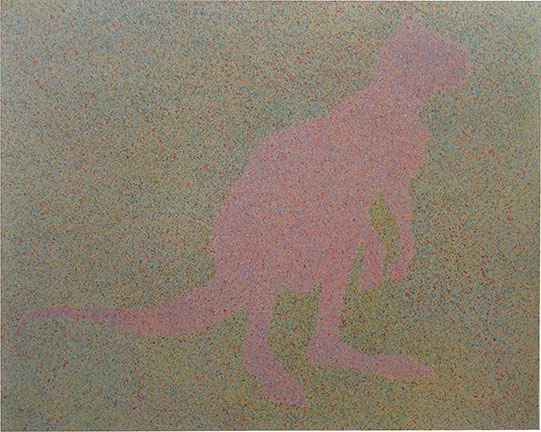
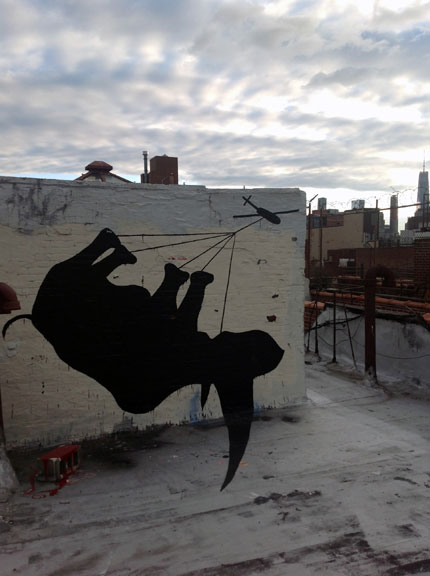
Painted on a tenement rooftop in the East Village, Elasmotherium Airlift also appears in the Missing The Megafauna AR tour at the Metropolitan Museum of Art where it is triggered by Tiepolo's Allegory of the Planets and Continents. Here is the accompanying script:
Bound in the talons of the thumping beast, the sky approaches yet yields no foothold. My legs have gone slack, no feeling, no motion, my toes are unrecognizable without the grasses underfoot.They are right you know, my great horn can cure many ills. Its radiance brings order to disharmony. Across the savannah all must give and take care and all understand that the horn is an expression of the animating grasses. Its power is non-transferable. That should be obvious. But home is receding. I no longer hear the cries of my young and must ask, is this the best that can be done?
This work, Elasmotherium Airlift, depicts the black silhouette of a Pleistocene-epoch rhinoceros (Elasmotherium sibiricum) strung upside down by ropes from an airborne helicopter. The reference is to the current conservation practice of airlifting rhinos to safer, less poachable areas of South Africa and Botswana. The method of lifting the massive creature by its ankles ostensibly places less stress on the animal than if it were bouncing around, anesthetized, in a truck.
The black silhouette format used in this work evokes and pays tribute to the Shadowman paintings of Richard Hambleton – iconic presences of absence in the 1980s streets of NYC.
On the tenement building rooftop, the gigantic horn of the elasmotherium transgresses a division between the wall’s vertical plane and the horizontal plane of the roof. To visually align the image across these perpendicular planes requires standing in a precise spot. Following the elasmotherium’s apparent flight path from this view means the helicopter ascends into the same sight corridor in the New York City sky where 3000 people perished in the World Trade Center tragedy. The implication is that the plight of the rhinoceros genus might be analogous to our own and that the decisive component of a preservation-driven airlift isn’t getting aloft, it’s finding a safe place to set down. Hauntingly for the elasmotherium, there was no landing pad, even over the horizon.
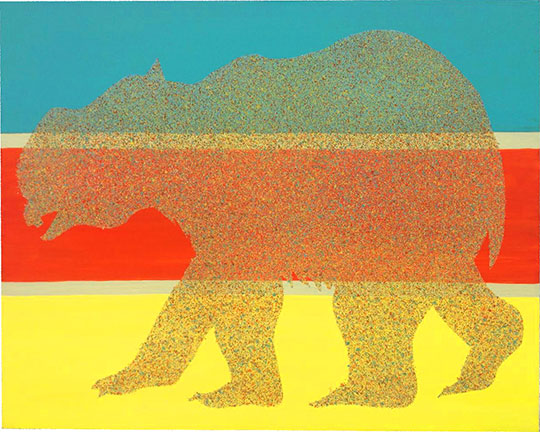
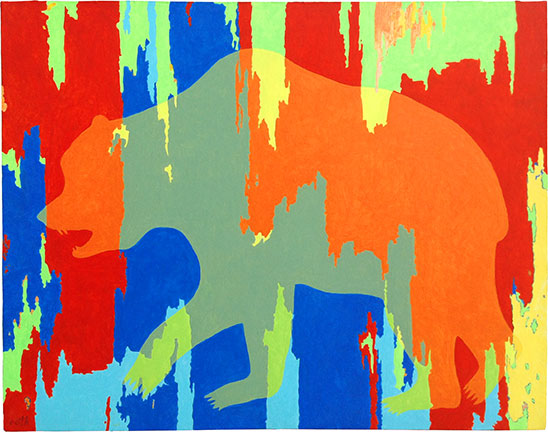
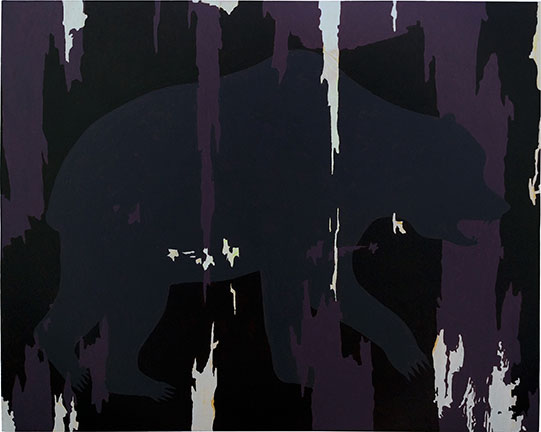
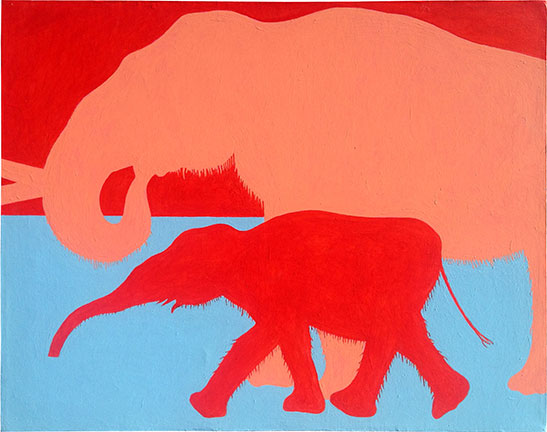
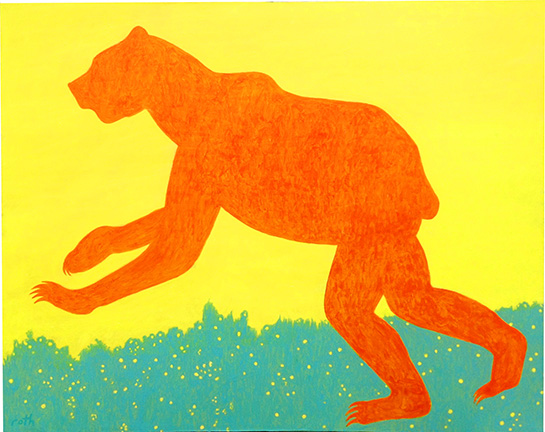
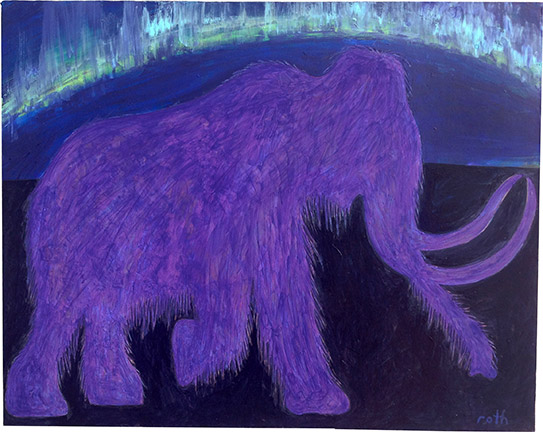
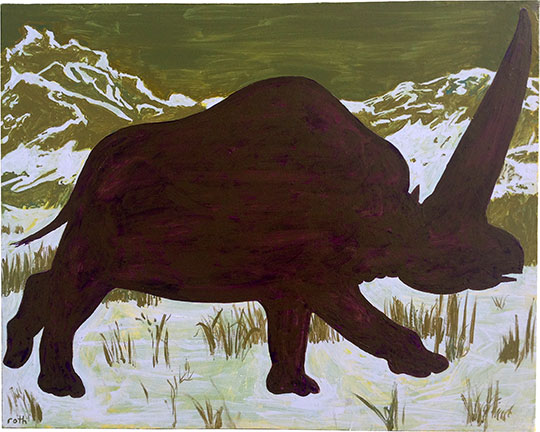
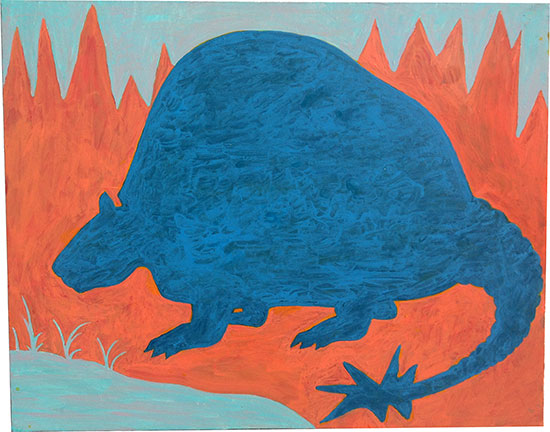
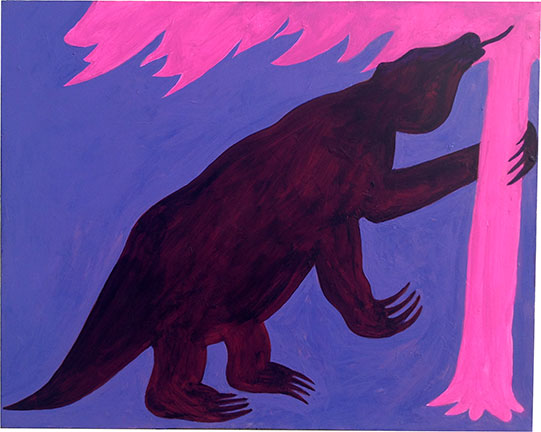
This painting's palette is derived from The Australian Bureau of Meteorology's recently expanded weather map color code.
